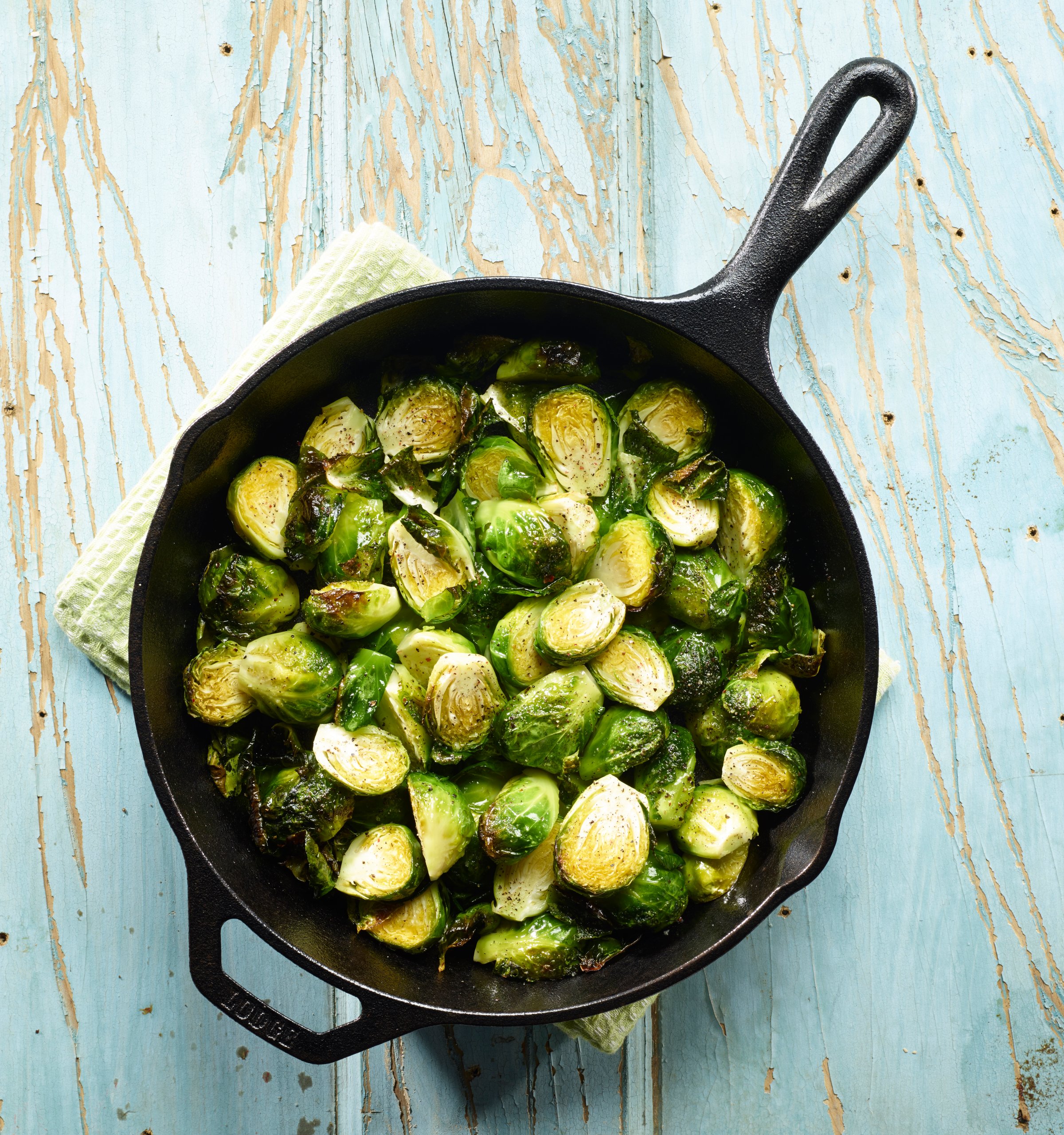
Brussels sprouts, broccoli, beets—yuck! Not so fast. Using a different cooking technique can totally transform the vegetables you thought you hated into mouthwatering sides you’ll want to make again and again. Here are 6 nutrient-packed vegetables you can instantly make taste better with a little know-how.
Brussels sprouts
Why you should eat them: These baby cabbages contain just 38 calories per cup and are packed with cancer-preventing phytonutrients and fiber.
Yuck-factor: An organic compound can cause Brussels sprouts to give off a stinky, sulfurous smell. “Boiling can make them seem slimy and even leach some of the nutrients into the water,” says Cynthia Sass, MPH, RD, Health‘s contributing nutrition editor.
Make them delicious: Roast Brussels sprouts to seal in nutrients and flavor. “Just slice in half, mist with a garlic and herb infused olive oil and roast on a baking sheet at 400 degrees,” Sass says.
Health.com: 13 Comfort Foods That Burn Fat
Broccoli
Why you should eat it: Broccoli, another cruciferous veggie, is high in vitamin C and fiber and racks up just 33 calories per cup.
Yuck-factor: Broccoli can taste quite dry when eaten raw, and watch out if it’s overcooked—you’ll end up with some very mushy florets.
Make it delicious: Broccoli tastes best blanched—a cooking technique where you dunk veggies into icewater after boiling them for two to three minutes. “This helps broccoli retain its crunchiness,” says Kristin Kirkpatrick, RD, wellness manager for Cleveland Clinic’s Wellness Institute. It also ensures the nutrients won’t get zapped from the food. After you’ve blanched the broccoli, you can pair it with an edamame dip for some extra fiber or top with lemon juice for an added kick, Kirkpatrick says.
Health.com: 20 Best Foods for Fiber
Peas
Why you should eat them: A cup of raw split peas has 50 grams of fiber and still contains 16 grams after being cooked.
Yuck-factor: “If you’ve only ever had the canned peas, then you are probably used to them being mushy,” says Tanya Zuckerbrot, RD.
Make them delicious: Peas are another food you will love after blanching. “Peas boiled very fast are going to have a nice snap to them,” says Zuckerbrot. Just make sure to follow the blanching times suggested by the National Center for Home and Food Preservation. The heat makes it easy for chlorophyll in the peas (or really any vegetable) to lose magnesium, leading to a chemical change that will leave them a yucky olive green if overcooked, Zuckerbrot says. When done just right, blanching will help your peas maintain ultimate freshness.
Health.com: 16 Ways to Lose Weight Fast
Spinach
Why you should eat it: At seven calories a cup, this superfood is filled with lutein, folate, potassium, and fiber, all nutrients vital to keeping your heart going strong.
Yuck-factor: Some people find raw spinach too bitter, while overcooking the leafy green leaves a soggy, mushy mess.
Make it delicious: Adding fruit to your spinach salad cuts the bitter flavor, Sass says. With a drizzle of olive oil for seasoning, it will taste even better. “When I cook it, I often lightly sauté in a little bit of hot chili oil, along with minced garlic and chopped sweet bell pepper.”
Cauliflower
Why you should eat it: Cauliflower is high in vitamin C, with more than a day’s worth of your daily intake, and has lots of water for extra hydration. Beyond that, it has phytonutrients that have been shown to lower cholesterol and fight your risk of cancer.
Yuck-factor: Boiling cauliflower can leave it soggy, bland, and smelly.
Make it delicious: Roasting cauliflower gives it a nutty, sweet flavor and creamy texture. Or, try Kirkpatrick’s favorite recipe: “Sauté them in olive oil then add in some walnuts, turmeric, and tomato sauce.”
Health.com: 26 Quick, Healthy Juice and Smoothie Recipes
Beets
Why you should eat them: Beets are rich in iron, fiber, folate, and potassium, and also full of disease-fighting antioxidants.
Yuck-factor: Beets contain the compound geosmin, also found in carp and catfish, which gives them an earthy flavor. Unfortunately it can also make beets taste like dirt. “That compound is most concentrated in the skin of fresh beets,” Zuckerbrot says. “That’s why you have to peel them first.”
Make them delicious: After peeling, drizzle the beets with a bit of olive oil and roast them like a potato. Or you could try pickled beets, which have a crispy texture. “When they are pickled with a combination of vinegar, sugar, and spices, it gives them a similar taste to sweet pickles,” Zuckerbrot says.
13 Veggies You Only Think You Don’t Like originally appeared on Health.com.
More Must-Reads from TIME
- Why Trump’s Message Worked on Latino Men
- What Trump’s Win Could Mean for Housing
- The 100 Must-Read Books of 2024
- Sleep Doctors Share the 1 Tip That’s Changed Their Lives
- Column: Let’s Bring Back Romance
- What It’s Like to Have Long COVID As a Kid
- FX’s Say Nothing Is the Must-Watch Political Thriller of 2024
- Merle Bombardieri Is Helping People Make the Baby Decision
Contact us at letters@time.com